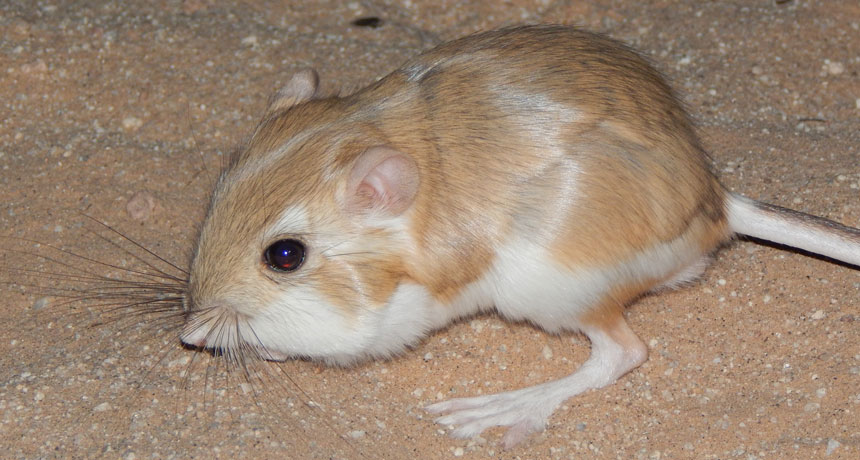Watch a desert kangaroo rat drop-kick a rattlesnake
High-speed cameras reveal the complexity of the rodents’ defensive maneuvers

KANG FU FIGHTING Desert kangaroo rats like this one can avoid deadly snake bites with remarkable agility — and powerful aerial kicks.
Clark Lab/San Diego State University






